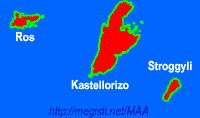P and A
 |
| (Click to Enlarge) |
P and A is yet another brilliant design by German craftsman Jean Claude Constantin - I'm yet to find one of his puzzles that I don't like. P and A is a simple name for a puzzle, but I guarantee you that solving it is anything but simple.
One thing that immediately captures your attention is the shape of the pieces, which are based on the letters p and a, and it's nothing like I've ever seen before in a puzzle. This is one of the reasons I like Constantin's puzzles so much. He has this genius ability to come up with these extremely original concepts and ideas, and even if you've seen all kinds of puzzles over the years, you'll still be amazed by his creativity.
Constantin not only creates great puzzles, but he also excels in their presentation, which is on par with his puzzle concepts. In the P and A puzzle, the difference between an average-looking puzzle and a stunning visual appearance is that he took extra care in the design of the tray, which is based on one of the pieces. The contrast between the dark color of the pieces and the pale color of the tray is a perfect fit to the already outstanding design.
The puzzle contains nine pieces already packed inside the tray and an extra one in a small compartment. The object, like any other packing puzzle, is to rearrange the pieces in order to make room for the final tenth piece. The irregular shapes of the pieces will make your task a little tough, but there's a couple of strategies you can use to make the challenge a little less complex.
This one's rated by PuzzleMaster as a level 8/10, so while not being extremely tough, you'll still encounter some difficulties until you'll be able to place that final piece. One thing that also adds for complexity level is the double-sided pieces, as their surface is identical on both sides. With this in mind, there are still some things that can help you towards a solution, though: One of them would be to separate the pieces and work out which ones you can use on the edges of the tray and the ones you can't; If you take a close look at how the pieces are packed in the nine-piece solution, you'll notice that there are plenty of empty spaces. This will change in the harder solution, because almost no empty spaces are left when all the pieces are packed. I can give you a hint as well: In the final solution, and excluding the natural spaces left by the curved shapes, only one single unit space is left empty. Other than that, all of the tray area will be occupied by the pieces.
Solution: Click here to download a solution if you have given up or you can check out my photo of the solution here. I'm not sure if there's only one solution or more, but after comparing my solution with the downloaded one, the only difference I see is that they're a mirrored image from each other, so that's still counts as the same solution. Let me know if you find a different one.
Closing Comments:
What's more to say? - Another brilliant puzzle by Jean Claude Constantin. The man just can't make a bad puzzle. From the actual design of the pieces to the final flawless presentation, everything in the P and A is tied in into a striking-looking puzzle and a great challenge. Definitely worth a try and a must-have for any collector.
Links:











.jpg)



















0 comments:
Post a Comment